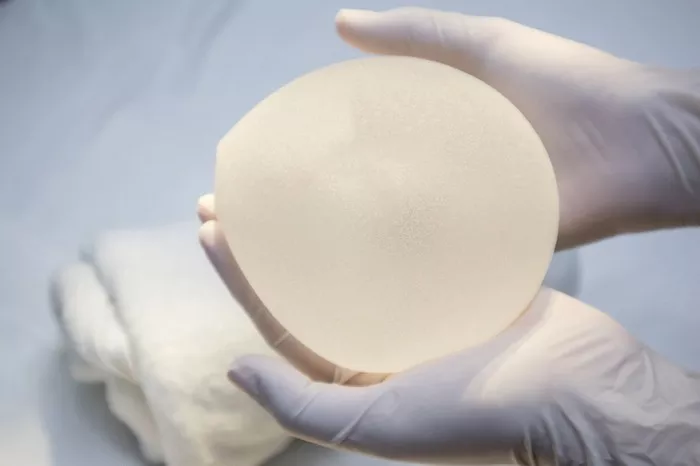Breast augmentation is a popular cosmetic procedure that helps women achieve their desired breast size and shape. While breast implants can produce beautiful and natural-looking results, some patients may experience a complication known as “rippling.” Breast implant rippling refers to visible or palpable wrinkling or rippling of the implant’s outer shell, which can be concerning for patients. In this article, we will explore the factors that contribute to breast implant rippling and discuss potential preventive measures and treatment options.
Understanding Breast Implant Rippling
Breast implant rippling occurs when the implant’s outer shell develops wrinkles or folds, leading to a rippled appearance on the surface of the breast. Rippling is most commonly observed in saline implants, which have a thin silicone shell filled with a saline solution. However, it can also occur in silicone implants, though it is less common due to the thicker consistency of silicone gel.
Factors Contributing to Breast Implant Rippling
Implant Type and Fill Material: As mentioned earlier, saline implants are more prone to rippling due to the fluid nature of the saline solution within the shell. Silicone gel implants, on the other hand, have a thicker and more cohesive filling, reducing the likelihood of visible rippling.
Implant Size and Profile: Larger breast implants and those with a higher profile have a greater risk of rippling. The volume and projection of the implant can put more pressure on the surrounding tissues, leading to visible wrinkles.
Underfilled Implants: In some cases, saline implants may be slightly underfilled, creating an uneven distribution of the saline solution. This uneven filling can cause localized areas of rippling.
Thin Skin and Tissue Coverage: Patients with thin skin and inadequate breast tissue coverage may be more susceptible to implant rippling. When the implant is positioned closer to the skin’s surface, the wrinkles are more likely to be visible.
Overlying Muscles: Subglandular placement (above the chest muscle) of the breast implant can increase the risk of rippling, as there is less tissue coverage compared to submuscular placement (below the chest muscle).
Weight Fluctuations: Significant weight gain or loss can affect the distribution of breast tissue and alter the appearance of breast implants, potentially leading to rippling.
Preventive Measures for Breast Implant Rippling
While it may not be possible to completely eliminate the risk of breast implant rippling, several preventive measures can help minimize its occurrence:
Choosing Silicone Implants: Opting for silicone gel implants instead of saline implants can significantly reduce the risk of rippling due to the thicker consistency of silicone gel.
Optimal Implant Size and Profile: Working closely with a board-certified plastic surgeon can help determine the appropriate implant size and profile that suits an individual’s unique body anatomy and minimizes the risk of rippling.
Submuscular Placement: Submuscular (under the chest muscle) implant placement provides additional tissue coverage, reducing the visibility of rippling.
Implant Overfilling: For saline implants, slight overfilling within the manufacturer’s recommended limits can create a smoother surface and reduce rippling.
Maintaining Stable Weight: Avoiding significant fluctuations in body weight can help maintain breast tissue volume and minimize potential changes in implant appearance.
Treatment Options for Breast Implant Rippling
Patients experiencing breast implant rippling have several treatment options to consider:
Revision Surgery: In some cases, a revision surgery may be necessary to address implant rippling. Switching to silicone implants, changing the implant position (e.g., from subglandular to submuscular), or adding additional tissue support may be recommended by the plastic surgeon.
Fat Grafting: Fat grafting involves harvesting fat from other areas of the body and injecting it around the implant to provide additional tissue coverage and camouflage rippling.
Use of Acellular Dermal Matrix (ADM): ADM is a regenerative tissue matrix that can be used to reinforce the breast tissue and provide added support around the implant, reducing visible rippling.
External Support: Wearing supportive bras or using specialized compression garments may help minimize the appearance of rippling, especially in cases of mild rippling.
Conclusion
Breast implant rippling can be a distressing concern for some patients seeking breast augmentation. Understanding the factors that contribute to rippling and adopting preventive measures can help minimize its occurrence. Consulting with a board-certified plastic surgeon is essential to choose the most appropriate implant type, size, and placement technique based on an individual’s unique anatomy and aesthetic goals. In cases where rippling has already occurred,various treatment options, such as revision surgery, fat grafting, or the use of ADM, can be explored to address the concern and achieve satisfactory, natural-looking breast augmentation results.


